Telling Returns
Based on data that I posted back in February, I hypothesized in April that various financial and demographic trends in Rhode Island suggested that working and middle class families were selling their homes and leaving the state. Although the more demographically focused Census data won’t be updated for another month, the IRS has moved its research forward a year with some interesting results that bear directly on public policy. The good news, according to IRS taxpayer migration data, is that Rhode Island only lost $162 million in adjusted gross income after tax year 2006:
Of course, the net loss of taxpayers (counted per their tax returns) was still in the thousands, at 3,733. Within those numbers is a net loss of 561 taxpayers to counties in Massachusetts and Connecticut that abut Rhode Island, taking with them an aggregate $23.6 million in AGI. As I’ve pointed out before, such folks have switched government regimes while remaining near to friends, family, and work, which smells of taxpayer flight. That, however, is where something interesting emerges. Note that the lost AGI was significantly less on tax returns filed in 2007 than in 2006 and that the average income of immigrants to the state was slightly higher than that of emigrants for the first time in the range under inspection:
The same was true of immigrants and emigrants overall (to and from anywhere), who had average AGIs of $56,940 and $54,907, respectively, compared with $46,168 and $48,075 during the prior period. This result obtained despite the fact that the number of tax returns with income under $50,000 increased for the first time in years:
The reason comes into view if we zoom in on the over-$50,000 range:
In summary, from tax year 2005 to tax year 2006, Rhode Island imported 6,976 “households” with income under $50,000, lost 32 with $50,000-74,999, and gained 1,757 with $75,000-99,999, 4,794 with $100,000-199,999, and 1,011 with $200,000+. Among those totals are 24,817 returns filed with the federal government from new hometowns outside of Rhode Island. It could be that the increase in the upper bounds came from middle-classers who’d sold their houses and moved out of state, but the fact that the average income of incomers was higher suggests that something different occurred.
One might surmise, that is, that those “tax cuts for the rich” that URI professor Donald Tufts recently decried in the business section of the Providence Journal are doing precisely what they were meant to do: draw families with disposable income to the state (and keep them from leaving). And lest those of opposing ideology whip out numbers making the cost appear too high for the benefit, herewith the state taxes claimed on the tax returns:
Despite decreasing taxes at the higher end, the total taxes paid are higher, and at least some of the effect is attributable to increased numbers of taxpayers. The only complaint that lefties can possibly have with such trends is that our increasingly progressive tax structure isn’t moving quickly enough.
Although making the disclaimer that this data obviously lags the current date, I’d suggest that the next steps for Rhode Island are to:
- Expand the strategy that appears to have worked with upper income households to target those in the middle income ranges.
- Make spending money in Rhode Island — as commerce and business — sufficiently attractive that the benefit from the latent financial resource of our growing wealthy class is maximized.

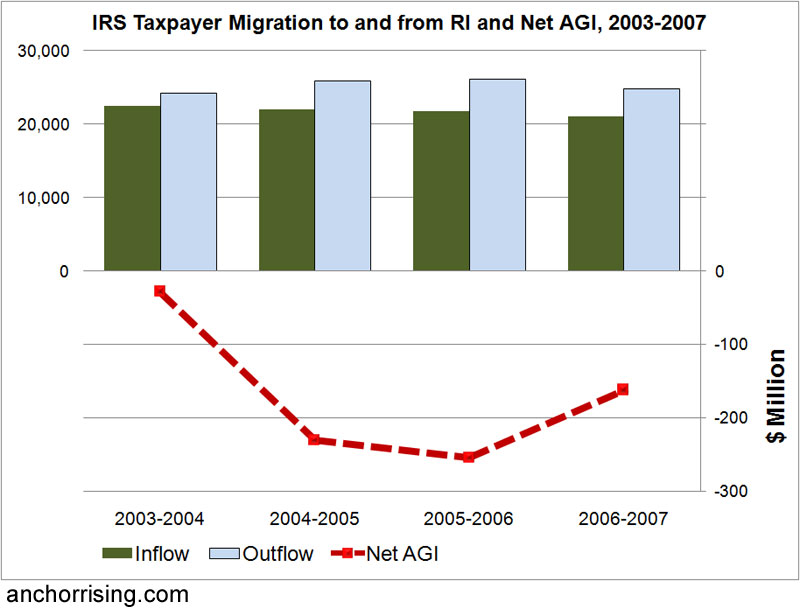
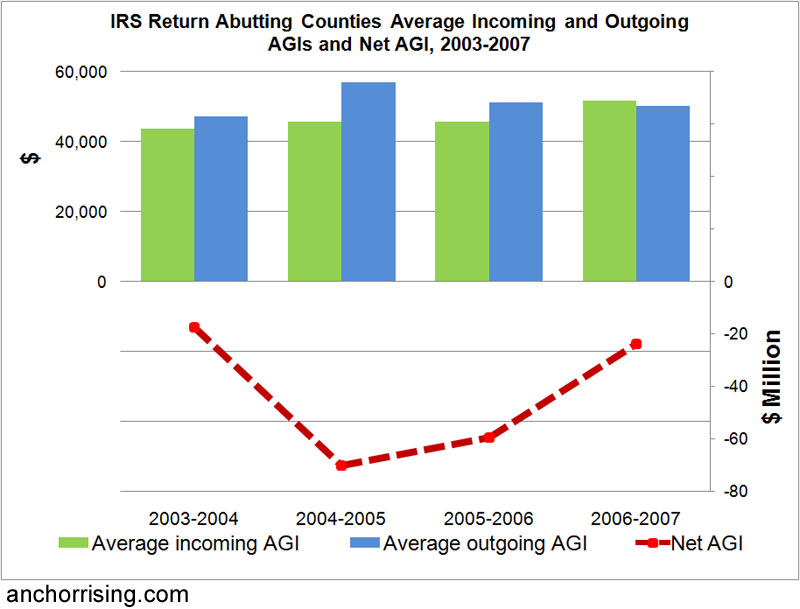
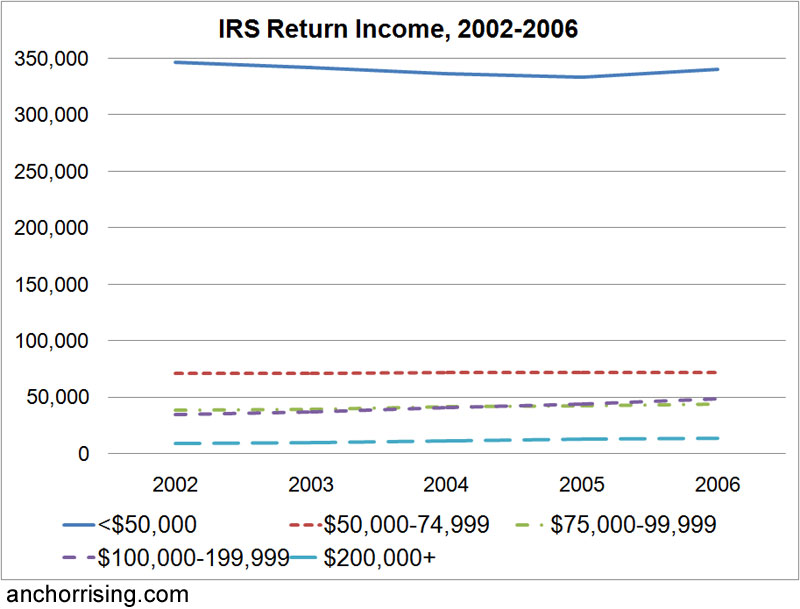
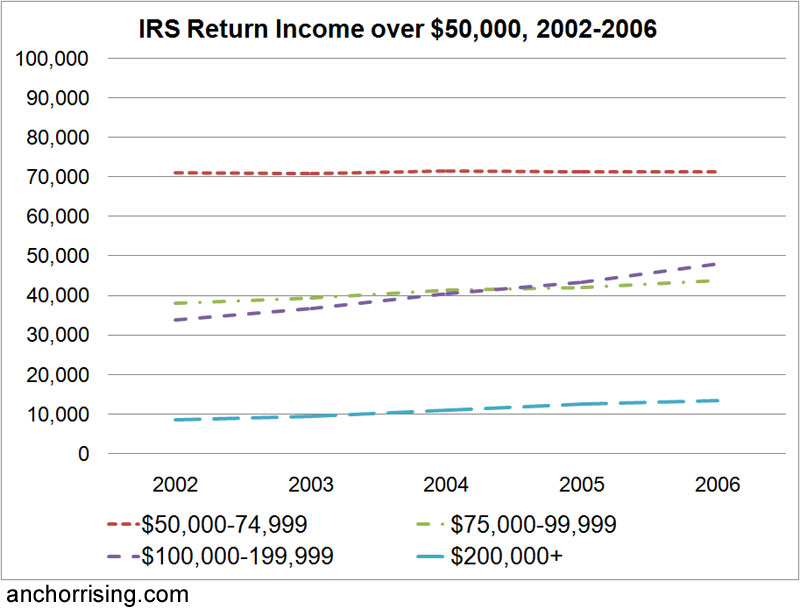
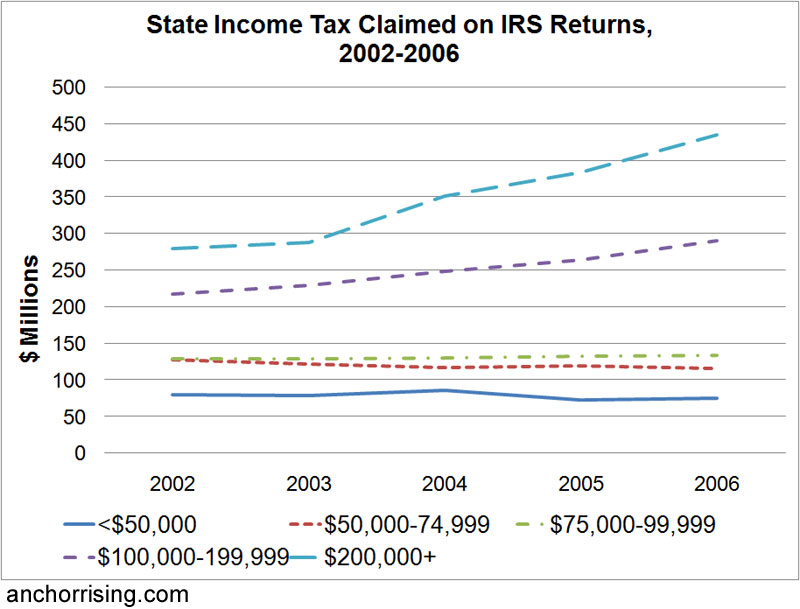
Don’t be surprised if much of this is attributable to capital gains taxes paid by RI residents AND nonresidents.
Along the southern ring of the state you have hundreds, and probably thousands of NY / CT / NJ people who have bought second homes. This really increased after 9/11 (RI is someplace to escape to, within easy driving distance, if there’s another terrorist incident … and is far less expensive than the Hamptons), not to mention the fuel added by the recently departed “real estate boom.”
Between RI’ers selling out to New Yorkers who would pay (by our standards) ridiculously high prices for second homes near the water (with the RE’ers heading to Florida / Carolinas) … and the inevitable churn of second homes between and betwixt nonresidents (who must file RI tax returns for capital gains on RI property) … I wouldn’t be surprised if there was still an actual net decrease in “high income” taxpayers who actually live and work in RI during the relevant period.
>>Make spending money in Rhode Island — as commerce and business — sufficiently attractive that the benefit from the latent financial resource of our growing wealthy class is maximized.<< This should be very easy to do with just one change. Change the state sales tax from 7 to 4 percent. RI is such a small state that pretty much everyone is a reasonable drive from MA or CT where the sales taxes are lower. If you're going to buy a big box item, you're probably going to jump across the border to save a few bucks. So why not reverse it? If RI were to lower their sales tax rate to 4% not only would more RIers start buying things in RI, but you'd then also draw in people from MA and CT looking to save a few bucks on the big items. Retailers would take notice and start to set up shop in places like East Providence, Woonsocket and Cumberland, not Seekonk and Attleboro. This would result in additional tax money into RI without the drag on schools that building more houses does. Not to mention it also saves people money. Seems like a no-brainer to me.